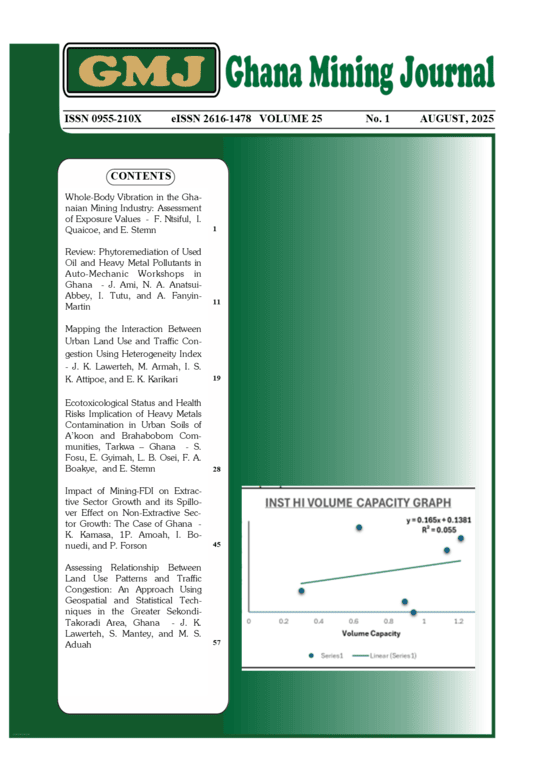Ecotoxicological Status and Health Risks Implication of Heavy Metals Contamination in Urban Soils of A’koon and Brahabobom Communities, Tarkwa – Ghana
Abstract
The ecotoxicological status and health implications of heavy metal pollution of soils in Ghana remain vague due to limited data. Herein, flame atomic adsorption spectroscopy (FAAS), multivariate statistical analysis and ecotoxicological indices were employed to determine the concentrations, pollution sources, as well as possible ecotoxicological effects of nine heavy metals (Cd, Co, Cu, Cr, Fe, Mn, Pb, Ni, and Zn) in soils of artisanal mining communities (A’koon and Brahabobom) in Tarkwa. In addition, the non-carcinogenic and carcinogenic risks for residents’ exposure through oral, dermal, and inhalation were estimated. Mean concentrations of the metals were in the order Fe > Mn > Zn > Cr > Pb > Cu > Co > Ni > Cd. Principal component analysis (PCA) and hierarchical cluster analysis (HCA) results concomitantly showed that Pb and Cd inputs may be due to anthropogenic influences. At the same time, Cr, Fe, and Co in the soil could be attributed to similar geochemical processes. Noteworthily, 45% of soil samples from the study sites had a total toxic unit (TTU) greater than 4, indicating that the heavy metals may pose harmful effects on soil-dwelling organisms. For all exposure routes, the estimated hazard quotients (HQs) for children, youth, and adult populations were < 1 for all metals. However, hazard index (HI) estimations showed a considerable non-cancer risk to dermally exposed children (HI = 1.5) residing in A’koon. The potential cancer risks associated with daily exposures showed that children in Brahabobom (5.7 × 10-4) and A’koon (4.13 × 10-4) might be susceptible to Cr via inhalation (> 1 × 10-4).
Downloads
Published
Issue
Section
License
Copyright (c) 2025 Shadrack Fosu, Eric Gyimah, Linda B. Osei, Felix Agyei Boakye, Eric Stemn

This work is licensed under a Creative Commons Attribution 4.0 International License.
Copyright © 2021 University of Mines and Technology (UMaT), Tarkwa. Ghana

